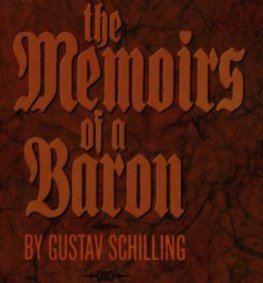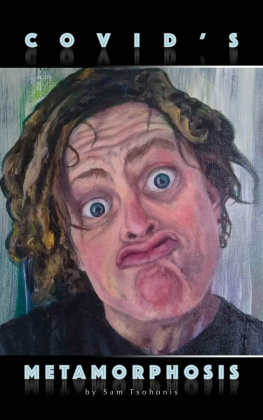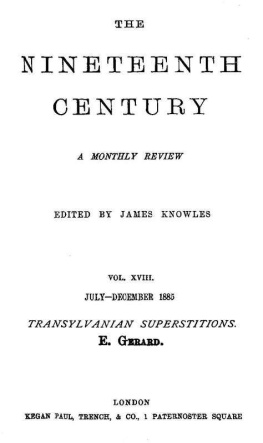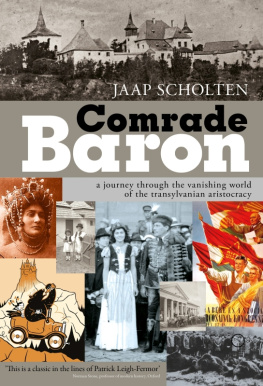
Metamorphosis Transylvaniae
This is one of the literary memoirs written by Transylvanian aristocrats in the late 17th and early 18th centuries. Baron Apor lamented the passing of traditional Transylvanian practices and the Metamorphosis, written in 1783, is not a memoir in the usual sense so much as a record of a vanishing way of life that the author had enjoyed in his youth, and had been told of by his elders. Apor focuses on the world he knew - upper class society, the company of Princes and Counts. He gives highly detailed accounts of Transylvanian dress, feasts, rituals, ceremonials, travelling, weddings, funerals and other social functions that are unrivalled for gusto, humour and colour. Here, for example, are young Lords whose horses had harnesses set with gems, coral and Turkish tassels of golden thread; noblewomen who wove pearls into their hair; Counts with forty castles; hospitality of a truly prodigious nature beginning with vermouth at breakfast drunk from silver goblets; fine banquets taken to the sound of pipes and violins, finishing with rousing dances such as the Mouse Dance. Exceptional, enchanting and exhilarating, this account of Transylvania is irresistible.
BARON PETER APOR (1676-1752) came from a long line of Transylvanian aristocrats. BERNARD ADAMS (translator) was educated at Pembroke College, Cambridge and specializes in the translation of Hungarian literature. He is the translator of Letters from Turkey , published by Kegan Paul.
The cover illustration is an seventeenth century engraving of Kolozsvar, the premier city of Transylvania.
Metamorphosis Transylvaniae
Baron Pter Apor of Altorja
Translated by Bernard Adams
First published in 2003 by Kegan Paul International
This edition first published in 2010 by
Routledge
2 Park Square, Milton Park, Abingdon, Oxon, OX14 4RN
Simultaneously published in the USA and Canada
by Routledge
711 Third Avenue, New York, NY 10017
Routledge is an imprint of the Taylor & Francis Group, an informa business
Kegan Paul, 2003
All rights reserved. No part of this book may be reprinted or reproduced or utilised in any form or by any electronic, mechanical, or other means, now known or hereafter invented, including photocopying and recording, or in any information storage or retrieval system, without permission in writing from the publishers.
British Library Cataloguing in Publication Data
A catalogue record for this book is available from the British Library
ISBN 10: 0-7103-0760-8 (hbk)
ISBN 13: 978-0-7103-0760-6 (hbk)
Publisher's Note
The publisher has gone to great lengths to ensure the quality of this reprint but points out that some imperfections in the original copies may be apparent. The publisher has made every effort to contact original copyright holders and would welcome correspondence from those they have been unable to trace.
Contents
After the Battle of Mohcs in August 1526 most of Central Hungary became part of the Ottoman Empire. An unstable, ill-defined and ill-defended area to the west and north-west of Turkish Hungary came under Austrian rule and became known as Royal Hungary, as the reigning Habsburg, Ferdinand I, had claimed the Hungarian crown on the death at Mohcs of Lajos II. To the east Transylvania, a Hungarian territory for more than 500 years, was relatively undisturbed; not on the line of the Turkish thrust into western Europe, it was strategically less important than the Great Plain. Thus Transylvania developed a significant degree of independence. Its rulers were elevated from the rank of bn or viceroy (which they had held under the Hungarian kings) to fejedelem or prince, and although nominally subject to distant Vienna and obliged to foster good relationships with the Turksthe approval of the Sultan, and in some cases his direct intervention, was needed to secure election to the throne--they were largely able to conduct their own affairs.
After the failure of their second siege of Vienna in 1683 the Turks' power waned rapidly. In 1686 an allied army under Prince Eugene de Savoie drove them from the old Hungarian capital of Buda, and their ejection from the former territory of the Hungarian Crown was formally completed in 1699 with the Treaty of Karlowitz, Even before that, however, in 1686 Prince Mihly I Apaffi handed back Transylvania to the Hungarian crown, then worn by the Austrian Leopold I. This led to the government of Transylvania directly from Vienna rather than from Buda, the incursion of large numbers of Austrian troops, and the giving of a considerable impetus to the Roman Catholic Church. This state of affairs was widely resented and the sluggish, phlegmatic Leopold made himself highly unpopular in Hungary and Transylvania; there followed an armed rebellion under the last Prince of Transylvania, Ferenc II Rkczi, which lasted from 1704 until 1711. His forces--the kuruc-- were defeated when French and Russian support was withdrawn, leaving the Austrians firmly in command. Many Hungarians found their rule as distasteful as that of the Turks.
* * *
The opinion has become widely held that from the early eighteenth century onwards Transylvania, the life of society there, and that of its Magyar population in particular, were characterised by decline, contraction and subjugation as the result of the 'great change' brought about by the coming of the Austrians. The darkest period of Transylvanian history began with the failure of the kuruc movement, and the region is dubbed Transylvania dolorosa by more than one writer of the time.
Although the Diploma Leopoldinum of 1691 reaffirmed the laws of Transylvania, the implementation of them and the government of the region were thereafter put into effect in the 'new manner' dictated from Vienna. The arrival of the new power did not, however, mean the colonisation of Transylvania, but the Viennese court endeavoured rather to ensure a balance of power in its favour by placing loyal Transylvanians at the head of offices important to it (financial control, military command, local government), while exerting relatively little influence on the traditional life of Transylvanian society; ownership of land and the structure of society were scarcely altered.
Nevertheless, the new power did not enter unopposed. It took a long time for those previously active in Transylvanian public life to acknowledge that the political orientation of the independent Principality towards Turkey was over for good. The collapse of Ferenc II Rkczi's kuruc movement, and of various attempts by exiles on behalf of his son Jzsef, all brought much wretchedness to Transylvania. The devastation of war was followed almost as a matter of course by famine and disease. At the turn of the seventeenth-eighteenth centuries meteorological conditions too were rather harsh; some climatologists speak of a 'little ice age', with cool, stormy weather unhelpful to agriculture. There were several plague years, rinderpest struck frequently, and there was even a plague of locusts.
To put it in a nutshell, the eighteenth century in Transylvania began very inauspiciously. It was a period in which the independent Principality lived on in the memory as a legendary golden age, while people happily forgot, amid the wretchedness of the present, that for much of its duration there had been wars, political struggles and settling of scores, epidemics following military campaigns, and great loss of life--all of which had affected most of all the Magyar population.













